It's autumn in Algonquin. Nights are cold and long, the hardwoods are just starting to blush their beautiful fall colors and Gray Jays are once again seeking people out for handouts. The vast majority of our seasonal staff have gone off till next summer, but yours truly is still around, waiting for it to get cold enough to start my journey South. Last night I devised a complex plan to go for broke and become a professional tuna fisherman, and then later ate my entire week's supply of tortilla chips. Yep, it's definitely autumn.
About a week ago, however, I had some free time (always dangerous) and decided to swing over to the Great Smoky Mountains in Tennessee and North Carolina to see if I can find some salamanders, and some neat birds down there too, plus see Appalachia before it gets blown up for coal. Always good.
I've been a birder for many years, but I've also done some herp trips here and there. Unfortunately for me, the vast majority of my friends are birders rather than herpers, so finding info about places to see things, especially not in Ontario, can be a bit difficult. In the world of reptiles and amphibians, just like in the world of plants, there are people out there looking to get their grubby little fingers on locations where they can poach specimens, either for the pet trade or the dinner table. This is why herpers tend to keep very quiet about their "secret spots" where certain species are hiding. It's a good thing, but unfortunate for people like me who want to see these things rather than sell them or eat them. So it was going to be a bit of an experiment - am I a decent field herper, or just a cheap wannabe who's all bark and no bite? I wanted to find out. So I went out there, without direction, without maps or spots - just knowledge of where these things live.
The Great Smoky Mountains
The Appalachians are exceedingly beautiful. There is no denying it. Though they lack the gothic, craggy appearance of the Rockies, their slopes, gentle peaks and valleys make up for it. Honestly, there was no place that I would rather have been at the time.
I had pretty decent luck finding most of my targets, but the whole search-and-find process isn't exciting enough to be blogged about, however there was one day that I thought was pretty remarkable and sort of puts this whole herping thing into perspective.
I was driving down the Blue Ridge Parkway in Western North Carolina to look for one of my "most-wanteds". It's a large, beautiful species that lives in moist talus slopes with lots of nooks and crannies to hide in - the Yonahlossee Salamander, named for an old road up at Grandfather Mountain.
So, here I am. It's 4:30 PM, I'm somewhere where I think this thing might range into. I can't be sure, but the elevation was right and I was close enough to the place where it was originally discovered. It's not that easy, though. Now the challenge becomes one somewhat reminiscent of a Pixar movie -
"Finding Talus"
You'd think finding a bunch of bloody wet rocks would be easy enough, but you are mistaken. I stopped here and there, found a couple of rocks that looked somewhat decent, but never anything that looked ideal. I decided to find a campsite for the time being, and maybe eat something. I managed to find a campground but by then it was on it's way to becoming dark. I had little hopes.
I set up my tent. It was a pretty little wooded area with some wet logs, and out of pity I turned one over.
Northern Gray-cheeked Salamander Plethodon montanus
And so I was back in the groove. I had some daylight left, about two hours worth, so I decided to drive further down the parkway and see if I can find some better talus than the two big rocks I'd found prior, that were now a 40 minute drive away.
I turned onto a pulloff that looked somewhat innocent and touristy, but then I discovered a little, intriguing trail downhill. I followed it, and saw this:
A big fast-flowing mountain stream, with shallow pools, small riffles, and big rocks....it wasn't habitat for the Yonahlossee, but it was potential habitat for a variety of other things, so I kept it in mind.
I continued plodding along, and it seemed like there were much better spots for the salamander here. I found some bigger piles of rocks, some seepy areas and other good-looking spots, but they were all right off the parkway and running around at night with a headlamp might attract some attention. Nonetheless, I had some good looking spots and headed back.
I don't know what caused me to pull into this crappy-looking pulloff spot. I think it was because of my internal satisfaction and I just wanted to admire the beautiful Blue Ridge sunset, but when I got out of the car and looked behind me to see what I couldn't from the road....
You know that feeling you get when you're doing a project, and you're struggling with it initially but you then get to the point where you know that you're going to be successful? The same feeling when you're out at the pub, and you see someone you like and you try hard to impress them until at one point you know for sure you're taking them home that night? (I say that like I know what that's like, right?)
That's what I felt when I saw this heap of talus. (I can't help it if I'm deprived) It was huge, seeping wet, and concealed from the public eye.
Just the way I like it.
I went back to the campsite and just chilled, satisfied with the way things were going. I even had a little nap. I woke up at 8:00 PM, and then it was go time. Oh baby.
It still wasn't pitch dark and I didn't want to scare any potential Yonahlossees back into the talus if they were just emerging, so I decided to check out that big creek I found earlier. I went in.
It was slippery and partially suicidal, but I made it down all the way to the creek bottom. Once I did, I shone my light at the first shallow pool I found, and look at what was looking back at me -
Shovelnose Salamander Desmognathus marmoratus
T'was a big ole' Shovelnose - an almost entirely aquatic species that is typical of quiet pools in streams like this one. It's very similar to another species, the Black-bellied Salamander, but this one is much paler, doesn't usually have a black belly, has a more shovel-shaped head, and their internal nostril openings (located at the bottom of their lower jaw) are shaped like slits. You can see the tail, too, is strongly keeled, allowing for the aquatic lifestyle that this species leads. Very cool!
There was another species here, the Black-bellied, which I also was keen on finding and the presence of this Shovelnose reassured me that they were here, as the two use similar habitat. Now it was a process of looking at the big rocks in the fastest flowing water.
Black-bellied Salamander Desmognathus quadramaculatus
I wasn't disappointed. These are big. REAL big - some reach 7 or 8 inches. They are ferocious predators of any unfortunate thing that they can catch and fit in their mouthes - including other salamanders. They even sometimes sit out in the middle of the day, but of course at night they are most active.
I found this guy wandering around too -
Blue Ridge Dusky Salamander Desmognathus orestes
And, of course, tons of Northern Gray-cheeks out and about as well.
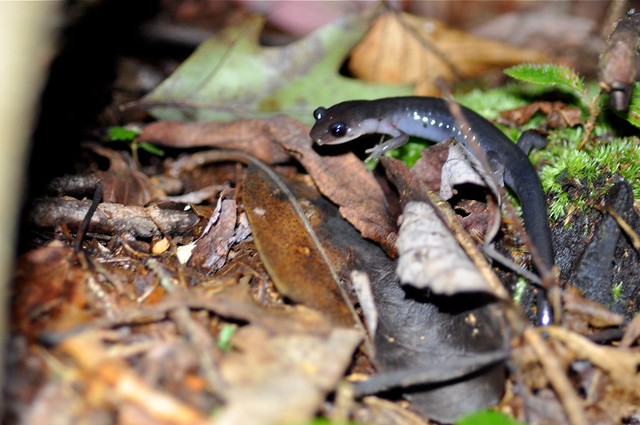
Northern Gray-cheeked Salamander Plethodon montanus

Northern Gray-cheeked Salamander Plethodon montanus
I was having a great night hauling these lifers in so far, but now it was time to get serious. It was later, pitch dark, and there were Yonahlossees to be found. I drove to my lovely talus and began to scale the boulders, looking into the cracks for any signs of life.

Southern Ravine Salamander Plethodon richmondi
There were tons of Ravine Salamanders, in every wet crevice. These are remarkable little salamanders that spend the hot months of summer aestivating in the depths of the talus, relying on fat accumulated in their tails to keep them alive until they emerge in the cooler months again. This guy was clearly just out - his tail was very sleek and thin, unlike some other I saw whose tails still had fat reserves and looked like little sausages.
Suddenly, a big shiny thing caught my eye, wedged in a crevice. I was excited - here it was. My moment of truth!!!! I ran recklessly towards my waiting target.
It was remains of a beer bottle.
I cursed at humanity, sighed and turned around to go back, and on the rock directly behind me, there they were.
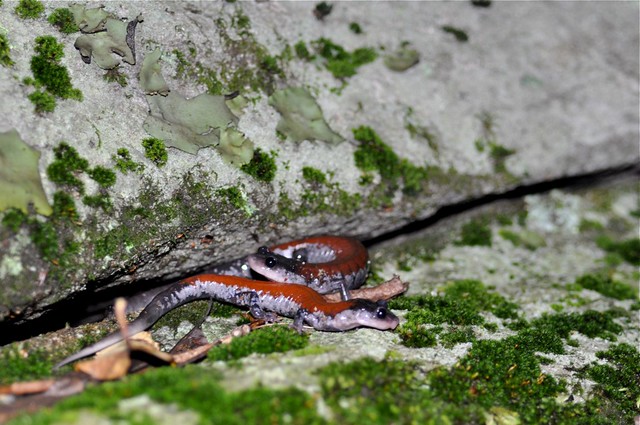
Yonahlossee Salamanders Plethodon yonahlossee
Both were adults, over seven inches long. The female is the one with the darker back in the background, and the male is the brighter individual in the foreground.
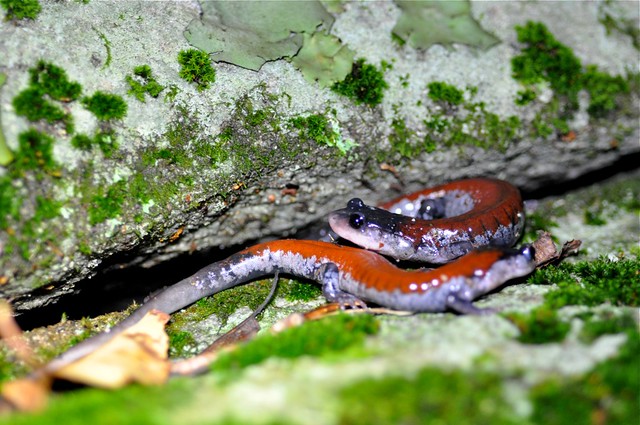
Yonahlossee Salamanders Plethodon yonahlossee

Red-cheeked Salamander Plethodon jordani
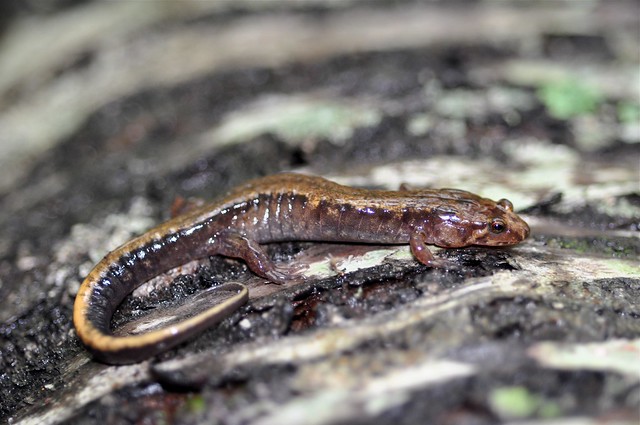
Ocoee Salamander Desmognathus ocoee
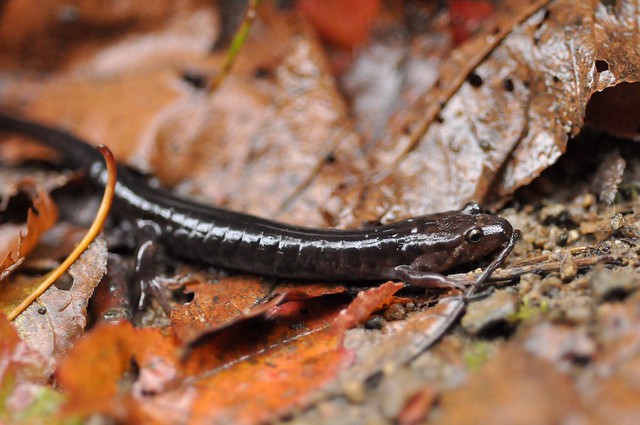
Imitator Salamander Desmognathus imitator
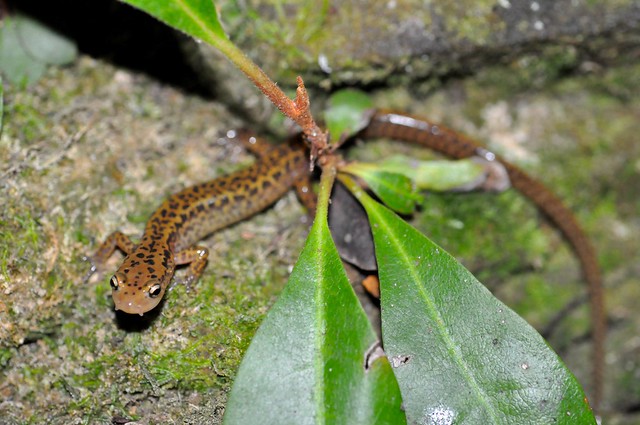
Long-tailed Salamander Eurycea longicauda
Neither of them cared about my spotlight. The male was busy displaying to the female - arching his back and wagging his tail like a little slimy dog.
I stood there, quietly, watching the entire thing. I was alone, and for a few brief moments in this big, wonderful, hectic, stressful life, I was thinking about nothing. I was up on a remote talus slope, in the middle of the Blue Ridge, with some crickets singing in the background, observing these two creatures engrossed in their own world, completely separate from mine. And I was content.
Being there with those two Yonahlossees is probably something I will never forget, and it's moments like these that I enjoy most while bumming around, looking at Nature. We spend a lot of time describing species, giving them names and explanations for their behaviours, reading about them, and drooling over pictures of them.
But there's nothing that beats going out there and seeing it for yourself.
That marked the 17th salamander species that I saw on this trip. I decided I was pretty good at this herping thing going solo, but certainly missed some embarrassing ones that I plan on catching up with next year, hopefully with some company. I got to see two more species in Shenandoah, but that is a story for another day. Meanwhile, enjoy these photos of some other species from this adventure.

Red-cheeked Salamander Plethodon jordani

Ocoee Salamander Desmognathus ocoee

Imitator Salamander Desmognathus imitator

Long-tailed Salamander Eurycea longicauda
Junaluska Salamander Eurycea junaluska
Seal Salamander Desmognathus monticola
Northern Slimy Salamander Plethodon glutinosus



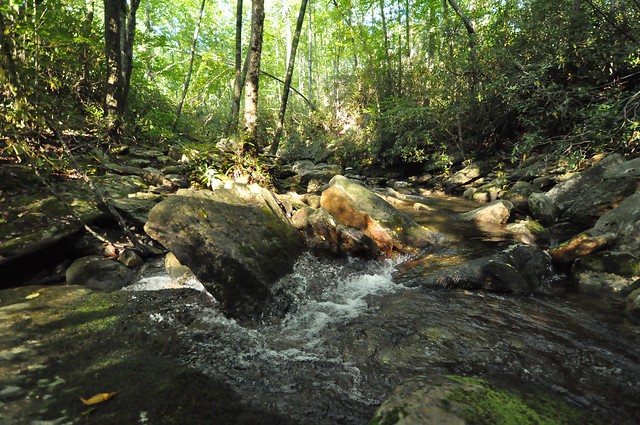
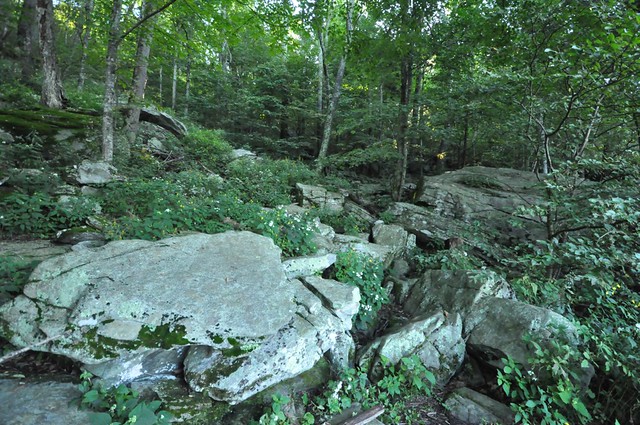
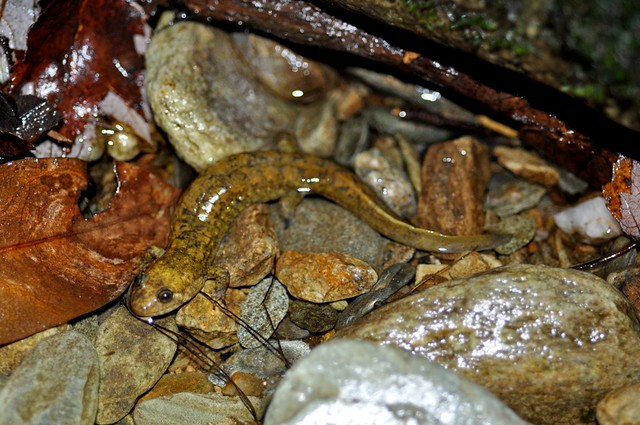

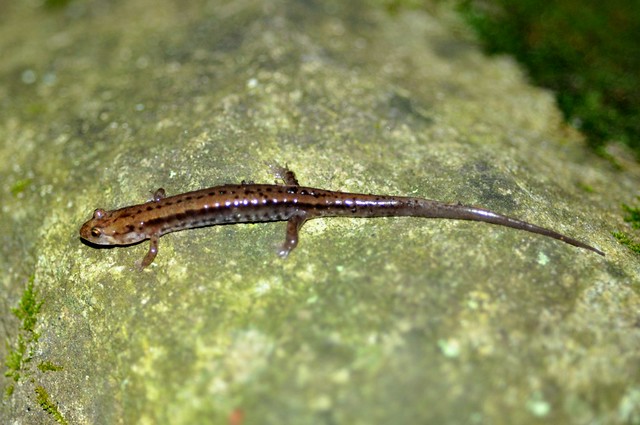
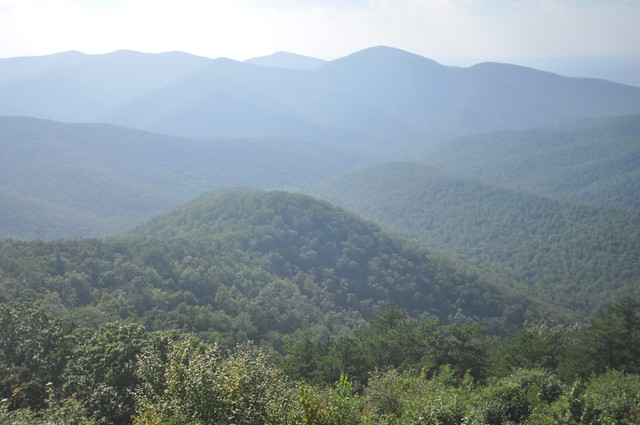
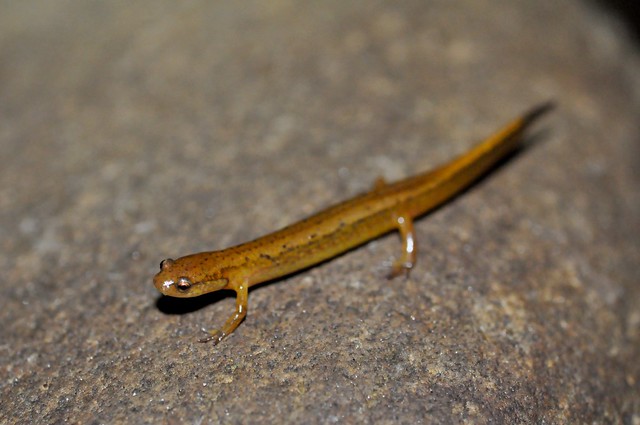


No comments:
Post a Comment